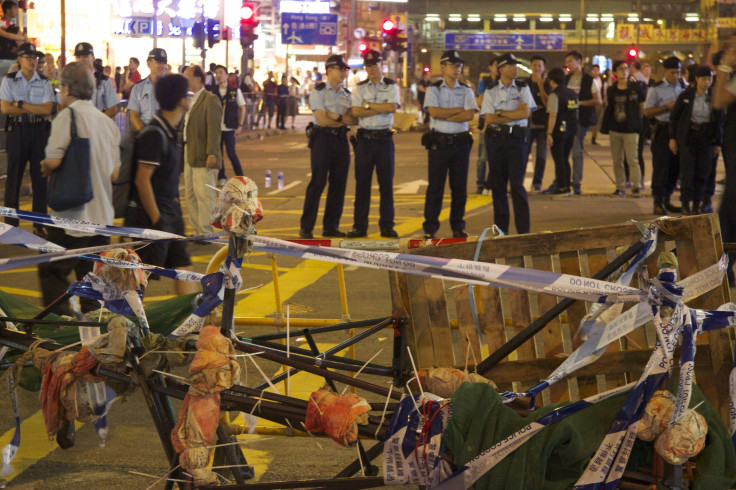Occupy Central: Hong Kong Authorities Calculate Traffic Paralysis Will Undermine Support For Protests

HONG KONG – As pro-democracy protests in Hong Kong enter their 12th day, much of the urgency and the mass-participation that characterized the initial days of the movement has dissipated. What remains, however, is the paralysis of some of the city's main thoroughfares.
The government’s long-term calculation is that the ongoing inconvenience to city residents will undermine public support for the protests, according to a report from the New York Times. The government has also learned a lesson from the overwhelmingly negative response to a police crackdown on Sept. 28, which saw officers use tear gas and pepper spray against demonstrators.
As a result, barricades around the main protest sites, constructed out of crowd-control barriers, traffic cones and whatever comes to hand, are still blocking traffic. At all three of the main protest sites, the barricades are for the most part unguarded. Police stand at the edges of the protest areas, only wading in when discussions between protesters and those who object to the action become too heated, and look like becoming violent.
The police have been so reluctant to take action against the protesters that officers removed a group of “pro-police” protesters from the main protest site in Admiralty Tuesday evening, leaving the protesters unmolested.
An activist manning the barricades, Gary Yeung, told International Business Times that “what has kept us going was the police brutality, the sheer lack of respect,” suggesting that the police strategy may suit their aims.
The upshot of this is that most of the eight-lane Queensway highway, the six-lane Nathan Road and areas around the Causeway Bay shopping district are closed to traffic. Twenty-five bus routes remain closed, 140 have been diverted and the city's tram network has closed entirely. The city's MTR, or subway network, continues to run as normal.
Protesters removed some barricades Monday night, allowing civil servants to access their offices in government headquarters, but traffic remains blocked. Hong Kong's Transport Department warned of major traffic congestion on alternative routes as a result of the protests.
One unexpected consequence of the protests, however, is a noticeable improvement in the quality of the city's notoriously polluted air, caused by the absence of road traffic. Hong Kong air pollution ratings from government monitoring stations dropped from 10/10 (serious) to 3 and 4/10 (low to moderate) in the days after protests began.
At least until talks between student groups and the authorities begin Friday, the authorities and protesters appear to have reached a stalemate, and the the city's main arteries will remain closed.
© Copyright IBTimes 2024. All rights reserved.












